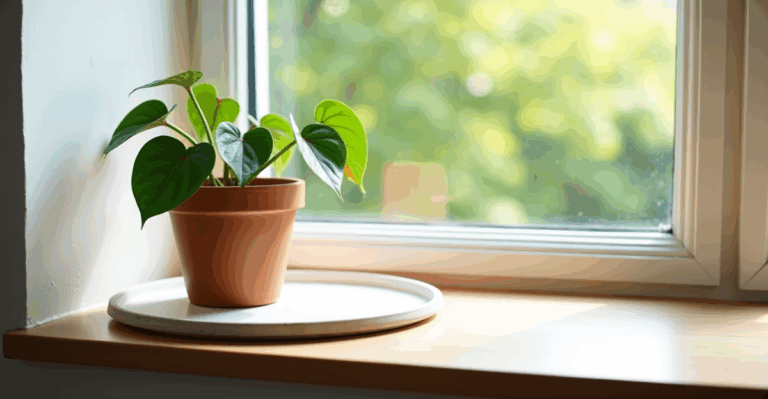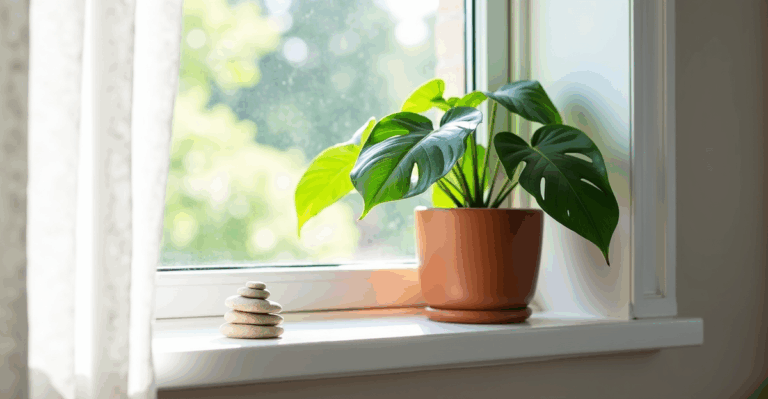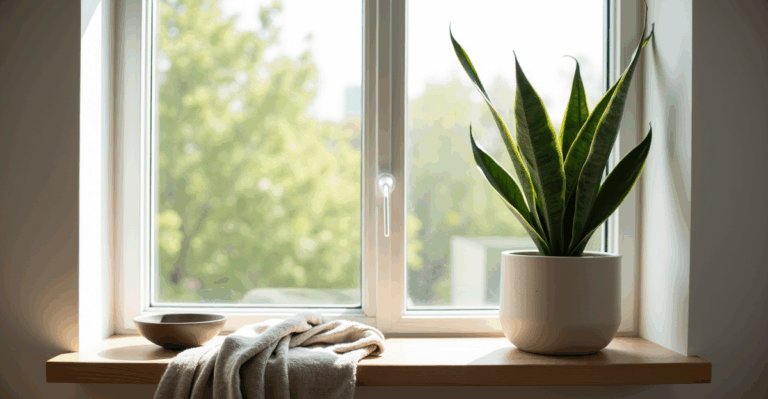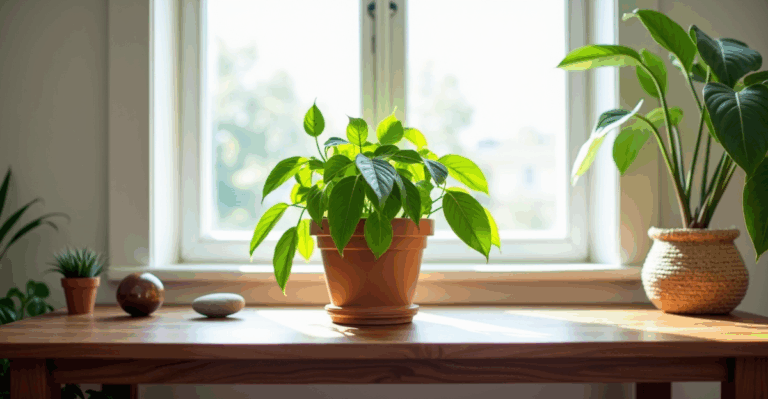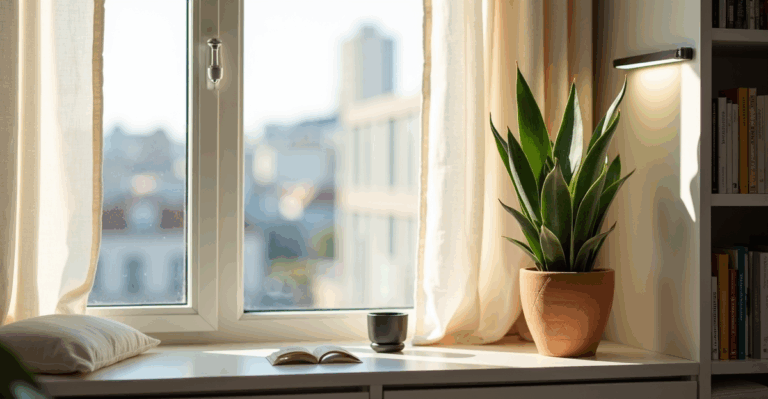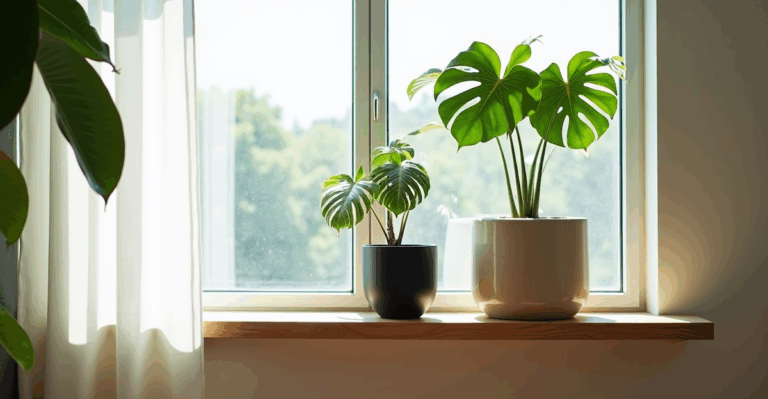Why Your Bay Window Snake Plant Looks Sad (And How to Fix It with Style)
You’ve got that perfect bay window – the one that floods your living room with morning light, or cradles afternoon warmth. You’ve chosen a snake plant (Sansevieria), a hero for its resilience and air-purifying reputation. But now it’s leaning, its tips are browning, or worse, it’s just… looking bored. You’ve tried watering it when the soil felt dry, but it’s not helping. The truth? Your window’s light and your potting setup are likely the quiet culprits. And styling it well isn’t just about looks – it’s about giving this tough plant the right environment to thrive, safely for your furry companions.
We’ve all been there: placing a plant in a beautiful spot, only to watch it struggle. Snake plants are often the last thing to die in a neglected home, but that doesn’t mean they’re thriving. They need specific light and drainage, not just “a sunny spot.” And if you’ve got cats or dogs, you need to know that while snake plants are toxic (not deadly), they’re a common plant chewer. Placement matters as much as the plant itself. Let’s make your bay window a sanctuary for both your plant and your pets.
Light: The Unspoken Factor in Your Bay Window
Most guides say “bright, indirect light.” That’s true, but where your window faces and what’s in front of it changes everything. A south-facing bay window gets intense, direct sun most of the day – perfect for some plants, but a death sentence for snake plants if they’re right at the glass. East-facing windows offer gentle morning sun, ideal for snake plants. North-facing windows are lower light, which snake plants tolerate well but might grow slower. West-facing is hot afternoon sun, risky.
Here’s what most miss: Curtains, sheer or heavy, dramatically alter the light quality hitting the plant. A sheer curtain on a south window might soften it enough, but an opaque one can turn a sun-drenched spot into a low-light zone. Observe your bay window throughout the day. Does the plant get direct rays for 2+ hours, or is it always dappled? If it’s direct sun, move it a few feet back from the glass, even to the sill edge. If it’s low light, snake plants are your safety net – they’ll survive, but won’t grow as fast.
Mini-Case: My friend’s south-facing bay window had her snake plant right at the glass. By 3 PM, the leaves were scorched. Moving it to the back of the ledge, where soft morning light hit it, stopped the browning within weeks. It’s still thriving, and her cat can’t reach it from the floor.
Watering: The Drainage Dilemma (Especially in Decorative Pots)
Snake plants are drought-tolerant, not water-loving. The biggest mistake? Overwatering, often because of poor drainage in their pots. Bay windows often have decorative cachepots (the outer pot) without drainage holes. If you put a plant in a pot that does drain into the cachepot, water pools at the roots – a slow, silent killer.
The key truth: Snake plants need the top 2–3 inches of soil to dry out between waterings. In a typical clay or ceramic pot, that’s easy to gauge. But in a self-watering pot or a decorative cachepot without a liner, it’s nearly impossible. You might be watering based on the pot feeling dry, not the soil inside.
How we fix it: Always use a pot with drainage holes underneath a cachepot or tray. If your snake plant is in a pot without holes, repot it into one with holes, even if it means getting a smaller pot. Place the pot on a tray with pebbles (to elevate it off standing water) or a simple saucer. Never let it sit in water. In summer, you might water every 3-4 weeks; in winter, every 6-8 weeks. Never water on a schedule – always check the soil.
Edge Case: A client put a snake plant in a beautiful, heavy ceramic cachepot. The plant started rotting. The solution wasn’t buying a new pot, but repotting into a standard pot with drainage, then placing that in the cachepot. The ceramic became a stylish, safe container without trapping water. This is where a lightweight, well-draining planter makes all the difference.
Styling Your Bay Window: Beyond the Single Plant
A snake plant alone in a corner of the bay window feels lonely. The magic happens when you layer it with other low-maintenance, pet-safe plants and thoughtful display elements. Think of it as a small, intentional mini-garden.
- The Layered Look: Place a smaller snake plant (like Sansevieria trifasciata ‘Laurentii’) on the lower sill. Put a taller, upright snake plant (like S. cylindrica) on a shelf above it, or beside it on a floating shelf. Add a low-growing, trailing plant like a Pothos (pet-safe!) in a hanging planter attached to the window frame – just above the bay window ledge so it doesn’t block light or fall into the room.
- The Texture Play: Snake plants have smooth, stiff leaves. Balance them with softer textures: a small, fuzzy Haworthia on the windowsill, or a few strands of Spider Plant (pet-safe!) in a woven basket. Avoid anything bulky that blocks light.
- The Practical Touch: Use a simple, non-slip mat under the plant pot to protect the window ledge from moisture. A small, lightweight riser (like a ceramic or wood block) lifts the pot slightly off the ledge, improving airflow around the base – crucial for preventing root rot in humid weather.
Real-Life Reality: My north-facing bay window is cold and dry in winter. My snake plant sits on a low shelf near the window, with a small Haworthia beside it. The snake plant gets enough light (diffused by the north window), and the haworthia is happy in the same conditions. The shelf keeps everything off the cold glass and makes the display feel intentional, not cluttered.
Pet Safety: Placement is Key (Not Just the Plant)
Snake plants contain saponins, which can cause vomiting, diarrhea, and drooling in cats and dogs if ingested. While rarely life-threatening, it’s unpleasant for your pet and stressful for you. The safest place for a snake plant is high and out of reach – not on a low window ledge a cat can jump onto.
- The Smart Fix: Place your snake plant on a high shelf above the bay window ledge, or on a sturdy, tall side table positioned behind the window (not directly in front, where it might be knocked over). If the bay window is low, use a shelf that mounts securely to the wall above the window, keeping the plant visible but safe from curious paws. A snake plant on a high shelf still gets great light and looks elegant.
Why this works: It’s not about removing the plant (snake plants are great!), but about working with your pet’s natural behavior. Cats jump; they don’t usually climb to high shelves. A plant on a 4-foot shelf is safe for most cats. Place it where you can see it and enjoy it, without worrying about your cat’s lunch.
Why Your Current Planter Might Be Failing (And Why 3D-Printed is Better)
Most standard planters for snake plants are heavy ceramic or plastic. Heavy ceramic is beautiful but traps moisture, leading to root rot if you accidentally overwater. Plastic holds moisture too long. Both are awkward to move, especially for a bay window that might need repositioning as seasons change or for pet safety. They also rarely have the perfect shape for a bay window’s curve.
The 3D-Printed Solution: We chose lightweight, durable materials that solve these problems. Our 3D-printed planters:
* Have perfect drainage (holes designed to prevent waterlogging).
* Are lightweight (easy to move for better light or pet safety).
* Come in custom shapes that fit bay windows perfectly – no awkward gaps or overhangs.
* Feature smooth, modern finishes that complement any decor, from minimalist to boho.
* Are pet-safe (non-toxic materials, no sharp edges).
Trade-Off Note: Repotting a snake plant can cause shock, but it’s necessary for health. A lightweight 3D planter makes the repotting process easier (less lifting) and the new pot more functional than a standard heavy one. It’s an upgrade, not a replacement for good care.
The Final Touch: Making It Feel Like Your Space
Styling a bay window isn’t about following a trend. It’s about creating a spot that feels intentional, beautiful, and functional for your plant. A snake plant is the anchor – tough, beautiful, and forgiving. Your window’s light, your pet’s safety, and your planter choice are the supporting actors.
The beauty is in the simplicity: a single, healthy snake plant on a well-suited shelf, with a small companion plant, placed high enough for your cat’s safety. No fancy gadgets needed, just the right setup for the plant and your home. You’ll see the leaves stand up strong, the tips stay crisp, and your cat happily ignores it. That’s the real win.
When you’re ready to grow your setup, explore our 3D-printed planters.
Key Takeaways
– Snake plants need top 2–3″ of soil dry before watering, not just a dry pot.
– Place them high in a bay window to keep them safe from pets and away from direct sun on south windows.
– Always use a pot with drainage holes to prevent root rot – the key to a thriving snake plant.


